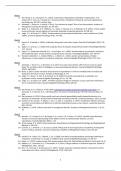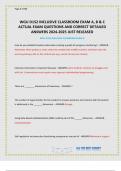Samenvatting
Summary Leadership - lectures + ALL articles (Master Leadership and Management UvA) (2023/2024)
- Instelling
- Universiteit Van Amsterdam (UvA)
For this academic year (), it is the first time this course has an exam. But lucky you, you can buy one now! Good luck with the preparation.
[Meer zien]






